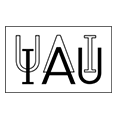New research centre for astrophysics
The competition “Wissen schafft Perspektiven für die Region” (“Science creates prospects for the region”) has a winner: The German Center for Astrophysics (Deutsches Zentrum für Astrophysik, DZA), a new large-scale research centre dedicated to astrophysics, is being built in Lusatia, Saxony, to advance research, technology development and digitization.
The Federal Minister of Education and Research, Bettina Stark-Watzinger, together with the Minister-Presidents of Saxony, Michael Kretschmer, and Saxony-Anhalt, Dr Reiner Haseloff, announced today at a federal press conference that the joint initiative of the astronomy and astroparticle physics communities has been selected in the competition to establish two large-scale research centres in Lusatia and the central German mining region. The locations will be in Görlitz and in the district of Bautzen. After the construction phase, annual funding of around € 170 million is planned for the center, and more than 1000 people will be employed in the center itself.
The applicants included many well-known scientists, supported by major German science organizations, including the German Astronomical Society and the Council of German Observatories. Prof. Dr. Michael Kramer, Director at the Max Planck Institute for Radio Astronomy and President of the German Astronomical Society, explains: “Astronomy is currently opening new windows to our cosmos, which not only fascinates the scientific community, but also, by driving technology and innovation, has the potential to change our world. With the DZA, a large-scale research centre with a forward-looking scientific programme is being created”.
With this, German astrophysical community addresses a key research policy already identified in its last memorandum (“Denkschrift”); that of a national large-scale research centre for German participation in large-scale international astrophysics projects. The DZA will ensure access for German science to future large-scale international projects and thus also open up opportunities for industry to participate in tenders.
The concept of the DZA
The concept of the DZA rests on three pillars: First, the DZA will achieve cutting-edge research in astronomy. This extends across the entire electromagnetic spectrum and into the gravitational wave window. In the initial phase, owing to their synergy, there will be a concentration on radio and gravitational wave astronomy; in the long term, the DZA will devote itself to all astronomical data.
In the second pillar, data streams from all over the world will be bundled and processed at the DZA. This also includes those from future large telescopes, such as the Square Kilometre Array or the Einstein Telescope. The data from these telescopes require several times the data traffic of today's internet and thus new technologies. The centre is intended to tame the data tsunami and in this way also accelerate the digitization of Germany.
The third pillar will be a technology centre where, among other things, new semiconductor sensors, silicon optics and control techniques for observatories will be developed. Building on the experience and the modern industry sector in Saxony, new companies and further high-quality jobs will thus be created through spin-offs.
Leading the initiative is the designated founding director of the DZA and scientific director of the European Space Agency ESA, Prof. Dr. Günther Hasinger. “This competition has opened up new prospects, both for Saxony and for our society – it is an important commitment to the future at a difficult time. After a demanding one-and-a-half-year process in which our concept was put through its paces, we are happy that we can now implement our project. Lusatia in Saxony is an ideal place for this for many reasons,” says Hasinger. “We would like to thank everyone who has supported us and look forward to future collaborations,” Hasinger continues.
Prospects for the region
“Astronomy has repeatedly shown that it is not only a fascinating science for all, but also a driver of innovation. The DZA can therefore exert an enormously broad appeal in Saxony and beyond,” says Michael Kramer. With its unique combination of research and development in IT, sensor technology and materials research and its need for manufacturing facilities, the DZA will also provide economic impetus and create at least 3,000 sustainable jobs at the centre and in the surrounding area. The DZA's portfolio is diverse, offering jobs in the scientific field, but even more so in the non-scientific field. With a Centre for Innovation and Transfer (ZIT), the DZA is breaking new ground in the cooperation between research and business. Through early, close cooperation with industry, universities and non-university research organizations, new technologies are to be developed jointly. Through international visibility and networking, the DZA aims to attract skilled workers and create prospects for young people in the region. Cooperation partners are the universities, above all the TU Dresden, and companies in technology development and data processing. More than 50 mainly small and medium-sized companies have also supported the DZA's initiative.
Locations
Seismic waves pass continuously through the Earth's surface. For gravitational wave detectors, they cause considerable interference. Particularly calm geological conditions are therefore also necessary for the development of measurement and production technologies. The DZA will use the unique seismographic conditions in the granite rock of Lusatia for its research and development of new devices. An underground research laboratory, the Low Seismic Lab, is to be built here in an area between Hoyerswerda, Bautzen and Kamenz, which will also be available for industrial applications, such as the development of quantum computers.
The city of Görlitz is an excellent location for the DZA due to its proximity to the university cities of Dresden, Wrocław and Prague and due to the promising new settlements in the innovation and high-tech sector. Here, an open campus for cutting-edge research is planned on the Kahlbaum site, embedded in the city, with the centres for astrophysics and data science, the technology centre and the centre for innovation and transfer. A visitor park is also part of the concept.
Construction phase
The funding provides for a three-year start-up phase before the centre can be formally founded. The TU Dresden will take over the project management during this period and will also be involved with its technical expertise in the field of data analytics, artificial intelligence and high-performance computing. A planning team is to start soon with offices at the Kahlbaum site in Görlitz and at the Low Seismic Lab in the district of Bautzen.
What the co-proposers say
“A national centre for astrophysics was missing in Germany. It is a great gain for the German scientific landscape with international appeal. It is good that it is being established in eastern Germany.”
Prof. Dr. Christian Stegmann, Director of Astroparticle Physics, Deutsches Elektronen-Synchrotron DESY, Head of the Zeuthen Site
“Astronomy has always been a high-tech science. The technological challenges that the DZA will work to solve are highly relevant for the regional economy, both for small businesses as well as for large industries.”
Prof. Dr. Matthias Steinmetz, spokesman of the Executive Board of the Leibniz Institute for Astrophysics Potsdam (AIP)
“The DZA will become a globally visible centre in the young field of gravitational wave astronomy and play an important role for German astrophysics in future large-scale projects such as the Einstein telescope.”
Prof. Dr. Michèle Heurs, Leibniz Universität Hannover
“TU Dresden will be a strong and capable partner for the DZA. Together, we will not only break new ground in digitization with intelligent data analysis, but also develop new technology solutions with green computing and the Low Seismic Lab, thus providing important economic impulses that will benefit not only astronomy but also society.”
Prof. Dr. Wolfgang E. Nagel, Director of the Center for Information Services and High Performance Computing, Dresden University of Technology
“Today, astronomy is already facing challenges from tomorrow's society in processing and storing large amounts of data. The DZA wants to make significant contributions to the resource-saving digitization of Germany.”
Prof. Dr. Hermann Heßling, Berlin University of Applied Sciences, Chairman of the Association for Data-Intensive Radio Astronomy (VdR) e.V.
“Astronomy inspires. We cannot arouse interest in STEM subjects early enough. From daycare centres to school labs, continuing education for educators to programmes for trainees and young scientists, we are focusing on education.”
Prof. Dr. Stefan Wagner, Landessternwarte Heidelberg and Professor at the Center for Astronomy at the University of Heidelberg
More information:
DZA website
https://www.dza-lausitz.de/en
Project summary (German)
https://www.dza-lausitz.de/sites/default/files/2022-05/Zusammenfassung_DZA_DE.pdf
Strategy (German)
https://www.deutscheszentrumastrophysik.de/sites/default/files/2022-09/DZA%20Konzept%20D%20final%20Kap%201_1.pdf
Denkschrift 2017: Perspektiven der Astrophysik in Deutschland 2017 - 2030
https://www.denkschrift2017.de
SKA Observatory (SKAO)
https://www.skao.int/en/news/403/welcome-our-new-website
Contact:
Prof. Dr. Michael Kramer
President German Astronomical Society
Phone: +49 228 525 278
E-Mail: mkramer@mpifr-bonn.mpg.de
Prof. Dr. Günther Hasinger
ESA Director of Science (ESAC, Madrid)
Phone: +34 91 813 1396
E-Mail: guenther.hasinger@esa.int
Katharina Henjes-Kunst
DZA Project Office
Phone: +49 337 627-7452
E-Mail: dza@desy.de
Dr. Janine Fohlmeister
Press officer of the German Astronomical Society
Phone: +49 331 / 7499-802
E-Mail: pressereferentin@astronomische-gesellschaft.de




